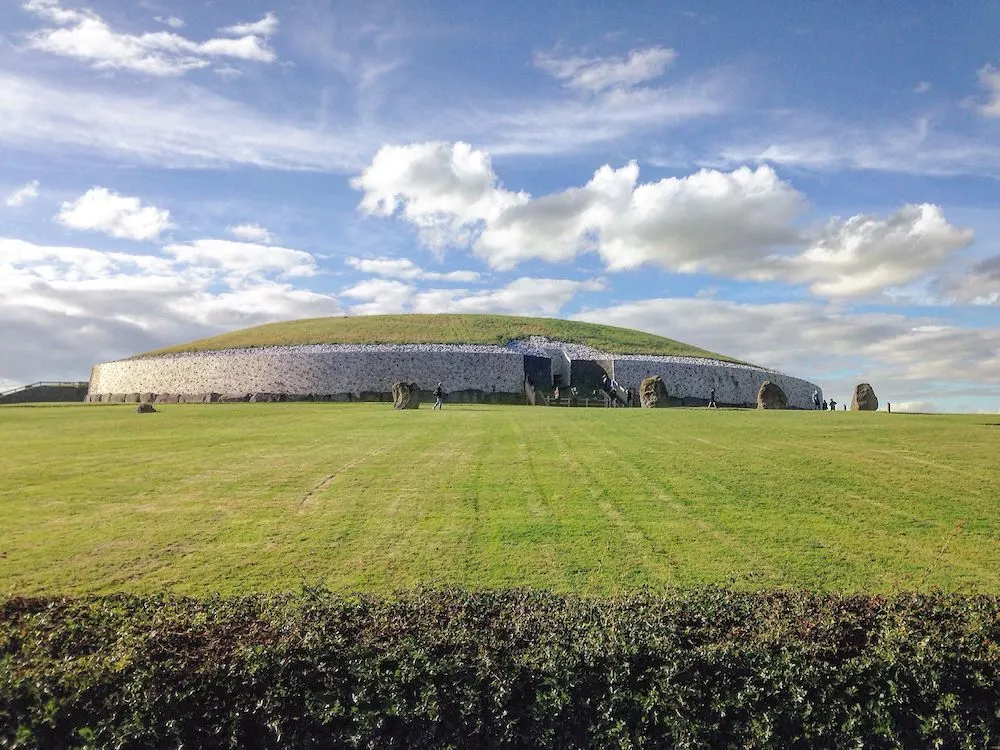Newgrange and other parts of the Boyne Valley were the most unexpected and memorable excursions from my summer stay in Ireland as a teenager. I subsequently did this day trip from Dublin with my parents and years later with Rich. I recommend it everyone who tells me they’re going to Ireland, but naturally, I think it’s an ideal outing with teens.
This day trip itinerary takes you to sites important to both Irish history and Celtic mythology. It includes a mysterious tomb older than Stonehenge, a good ghost story and a shrunken head. Best of all, you only have to drive about 50 miles from Dublin to cover all of it, making it very doable in a day.
It’s easy enough to do drive this stretch of Ireland’s county Meath on your own. But if the whole driving-on-the-left is not your thing, Viator and others have organized bus tours that will hit all the high points and leave from Dublin City Center.
Here is my plan for exploring the Boyne River valley (Brú Na Boinne) in Meath in one day with teens.
Planning a trip to Dublin?
Here’s the perfect 3-day couple getaway to Dublin
• 21 Things To Absolutely Do With teens in Ireland
Rich and I loved the Morrison Dublin hotel right next to the Liffey
Rent a 5-bedroom townhouse near St. Stephens Green.
Read up on your Irish Myths and Legends before you go.
Your Teen Will Never Forget This Day Trip From Dublin to the Boyne River Valley
Welcome to Newgrange
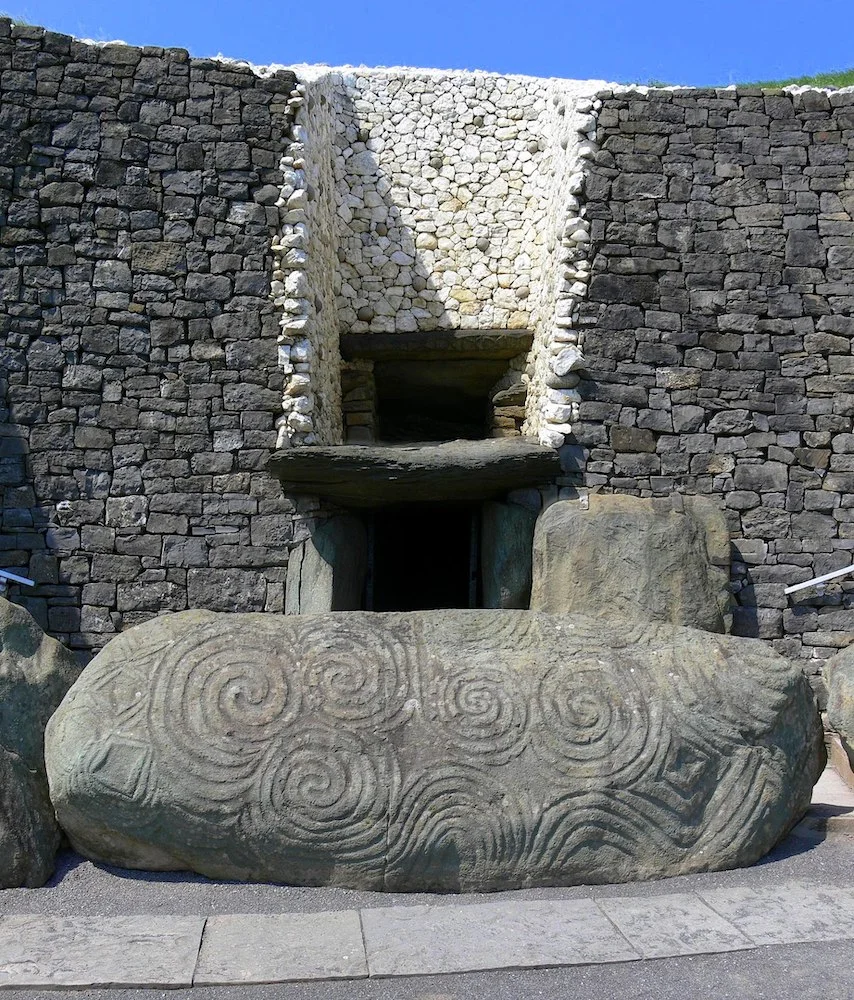
Newgrange, a neolithic tomb some 30 miles from Dublin in the Boyne River Valley (top), will be the highlight of your day.
The Newgrange World Heritage Site is truly unique. The tomb dates from roughly 3200 BC, which is 500 to 1,000 years before either Egypt’s Temple of Giza or Stonehenge were built. It’s a large stone mound with a slim corridor and a small chamber that floods with light at sunrise on the winter solstice. There’s an annual lottery for spots inside the tomb on that day.
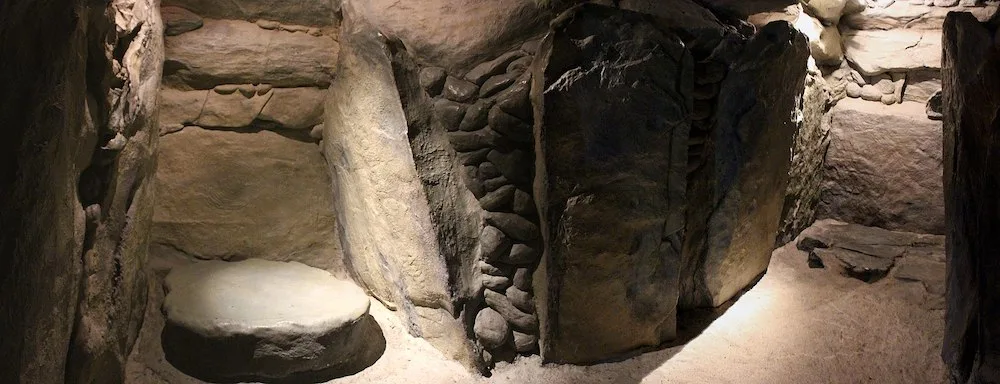
You have to follow a guide into the tomb and the visitors’ center caps the number of people allowed in each day (during the summer it’s a good idea to book ahead or take a tour).
The onsite tour covers how the tomb was built, its possible uses and its role in Celtic culture. And it recreates the solstice sunrise with lights. You can learn more about its structure and see a model of the chamber at the visitors center, too.
Tweens and teenagers will like the fact that it’s dark, dramatic and still somewhat shrouded in mystery. Teens who are into mythology or ancient history will love it.
I think elementary school kids probably won’t grasp how old and unique it is. The tour is short and they might find experience curious at the very least.
Newgrange and the surrounding Boyne River Valley feature prominently in Ireland’s rich mythology. It was the home of the Tuatha de Danaan, a cast of larger-than-life heroes and fools similar to the Greek pantheon of gods.
In some stories, one of central heroes, Angus, calls Newgrange his home. The front stone and others around the base feature great examples of original Celtic scroll work.
Like many similar structures it was literally buried in time—no doubt with sheep grazing on its grassy top—and was unearthed in the 1800s by farm hands digging for stones. Now it has a visitors’ center, organized tours and a gift shop.
Then Pursue Celtic Myths…
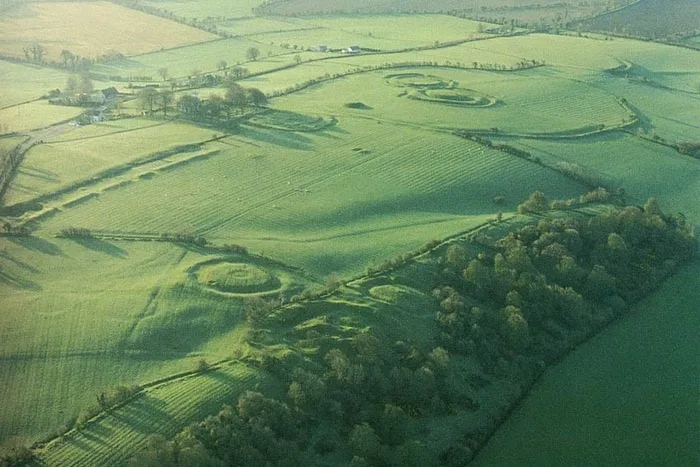
For more of Celtic Ireland you can explore the Hill of Tara, which also figures prominently in Irish mythology as the gateway to the gods. In real-life history it was the seat of the Celtic clan chiefs.
A visitor’s center has a video that explains the history of Tara and the smaller passage tomb discovered there and tours can be arranged. If you luck out with good weather it’s a scenic place to wander around.
… & British Battles Around the Boyne Valley
The Boyne Valley was the setting for one of the more notorious events an Anglo-Irish history. The Battle of the Boyne—which sealed both William of Orange’s seat on the British throne and England’s colonization of Ireland—happened about five miles from Newgrange.
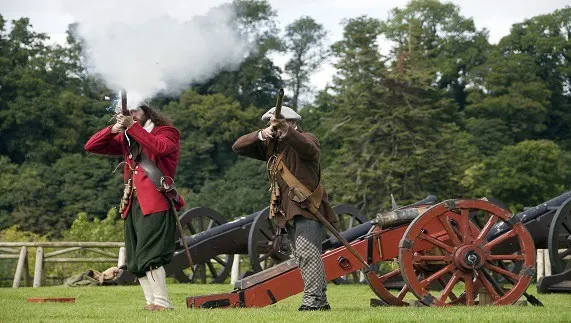
The Oldbridge mansion has been turned into a visitors’ center where costumed interpreters do reenactments and historic-arms demonstrations. From here, history and war buffs can embark on a self-guided tour of the battle site. My experience is that, for kids and teens, there is nothing more boring than a battlefield.
But this is one of the most formative events in Irish history and it’s worth a stop to learn more about it. There’s a tearoom, too, where you can warm up with a snack while imagining the sounds and sights of advancing armies across the fields.
Stop By 2 Very Different Castles
Slane Castle is also about 5 miles from Newgrange.
Gen X parents and grandparents will appreciate it as the place where U2 recorded the Unforgettable Fire album and shot video footage for the album’s songs.
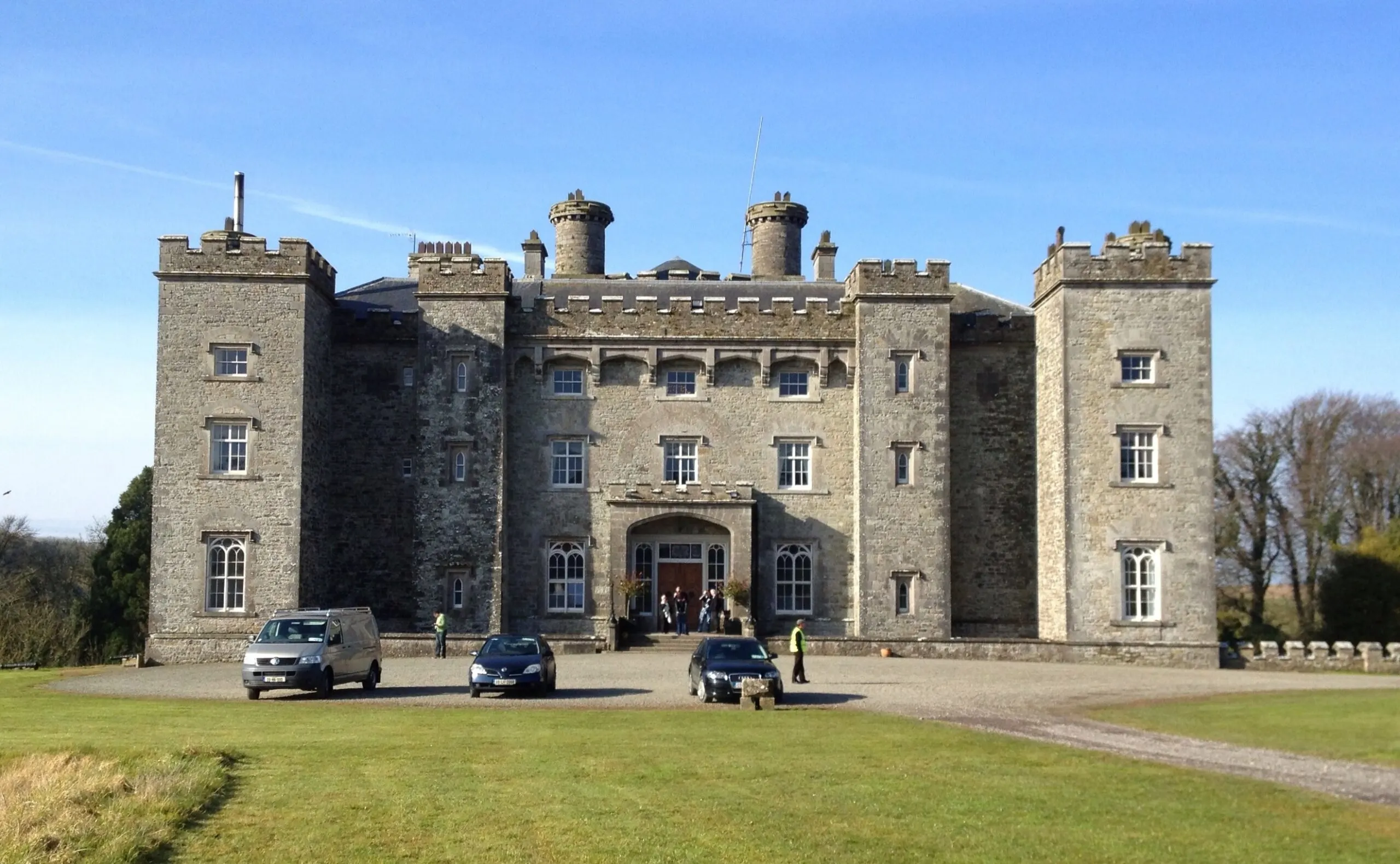
It’s a 17th century castle, meaning that it’s more Downton Abbey than battle ramparts. They give tours on select days of the week and hold an impressive array of outdoor concerts in the summer.
Newgrange, Slane and the battle site form a triangle of points. If you can’t catch a castle tour stop to take a peek at the lovely grounds and to snap a few photos.
Trim Castle was absolutely built to be a fortress and looks that way. It was built by an Anglo-Norman baron over the 12th and 13th centuries to hold a strategic point along the Boyne River and protect Dublin from the Celtic clans trying to push the Anglo-Normans out.
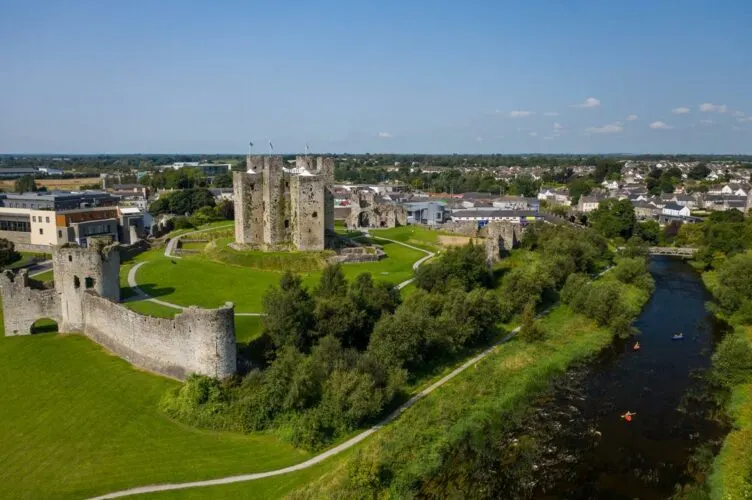
It’s tall and boxy with a high stone wall around it and you’re free to wander around on your own, which makes it a bit more family friendly. A fortified medieval village once surrounded the castle and that has grown into a modern town. It’s an odd juxtaposition but it makes Trim a good place to walk around a stop for lunch.
Movie fans will want to know that the castle stood in for several Scottish keeps and castles in Braveheart.
Consider a Stop in Drogheda
Drogheda is another former medieval town on the Boyne. You can see remnants of the walls and gates as you walk around. It bills itself as the jumping off point for your Boyne Valley site-seeing.
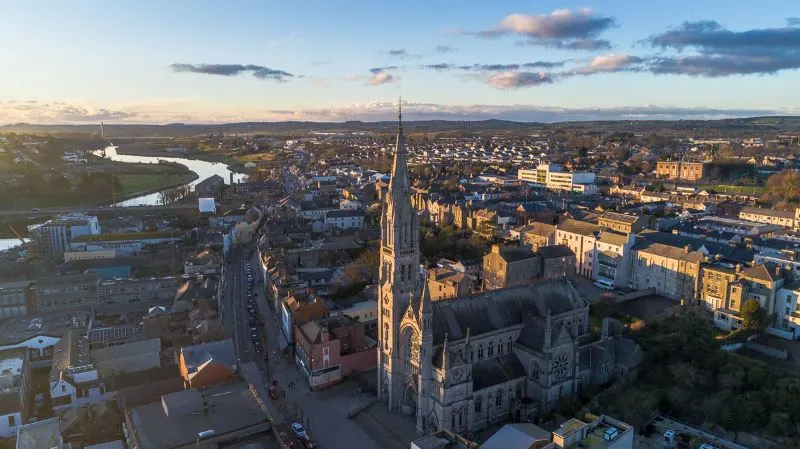
It’s come a long way since its medieval days. It’s turned an old church into a collection of art galleries and holds an annual Samba festival. I like Drogheda because it has charm —You’ll find restaurants and smart shopping—but it feels like a real town, not a made-for-tourist village. It’s another good place to stop for lunch or a snack on your way to or from your other activities.
If you have spiritual inclinations (or kids who revel in the macabre) you can visit St. Peter’s church to visit Oliver Plunkett, a local 17th-century saint whose shrunken head is on display.
End the Day With Gormanston’s Ghost Story
If you’re not totally exhausted yet, stop on the way back to Dublin in the tiny coastal farm town of Gormanston and visit its namesake castle.
The castle, a 17th century manse that’s now a Franciscan boarding school, is approached via a fantastic tunnel of twisting yew trees that open onto its front steps through a giant hedge. Teens will love wandering around in these ancient woods, and the photo ops are great.
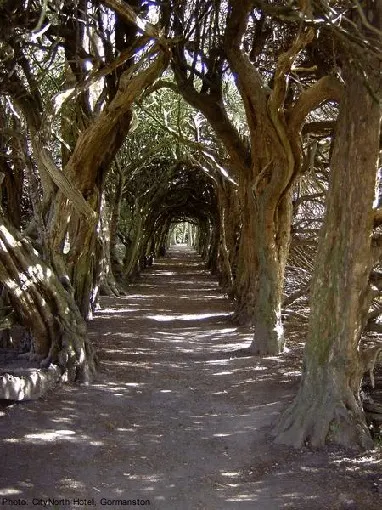
Better still, you can thrill your young ones with this spooky tale:
A few hundred years ago, during an episode of fox hunting, an empathetic member of the Gormanston family took pity on the fox and saved it from the hunters. Since then, whenever the current Lord Gormanston is on his deathbed, foxes gather round the home to keep vigil and howl in lament.
If you have time and want to stretch your legs, there’s a nice wide beach nearby where you’ll find locals walking dogs and kicking footballs.
Back in Dublin, over pints of Guinness and a warm dinner, you can discuss whether you believe the tale of the foxes.
Your Driving Plan for this Day Trip from Dublin to Newgrange
The itinerary below will take you largely in a circle without having to back-track. It’s about three-and-a-half hours of driving in total. If you don’t want that long a day, of course, you can pick and choose from the list — just don’t miss Newgrange.
If you want to stay overnight and do it more leisurely, seriously consider booking into the Trim Castle Hotel. It’s modern and stylish with castle views, easy access to the town, a bar and coffee bar and a restaurant that features local ingredients. It’s definitely a treat.
Your full itinerary:
- Dublin to Trim Castle: 30 miles; 50 minutes
- Trim Castle to Hill of Tara: 10 miles; 20 minutes
- Hill of Tara to Slane Castle: 15 miles; 25 minutes
- Slane Castle to Battle of the Boyne Visitors Center: 10 miles; 25 minutes
- Battle of the Boyne Center to Newgrange: 5 miles; 15 minutes
- Newgrange to Drogheda town center: 5 miles; 15 minutes
- Drogheda to Gormanston Francisan College: 8 miles; 18 minutes
- Gormanston to Dublin: 25 miles; 40 minutes
Pin it for later!
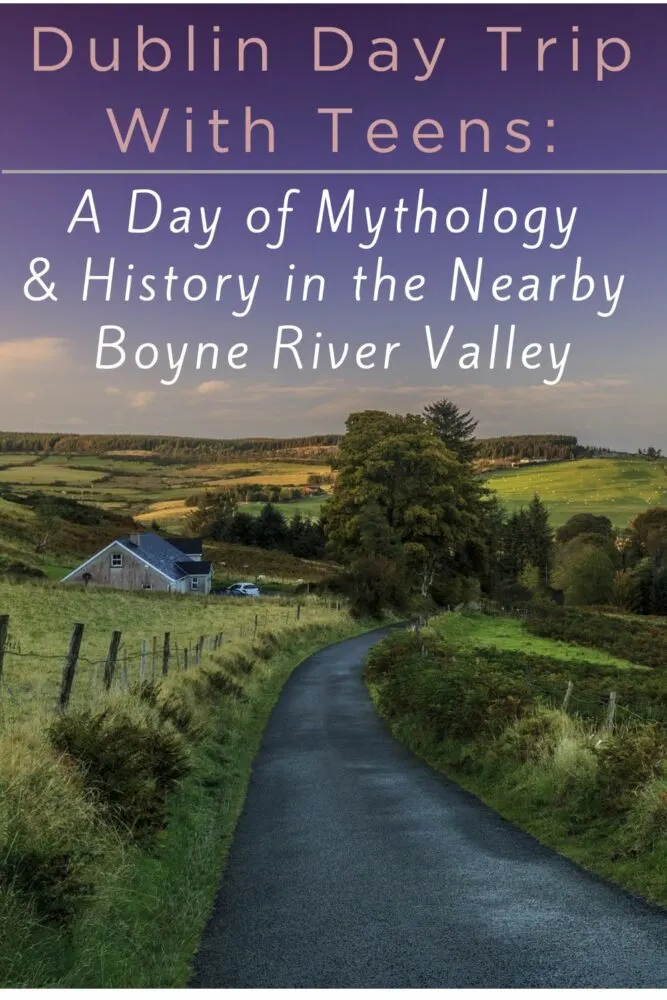
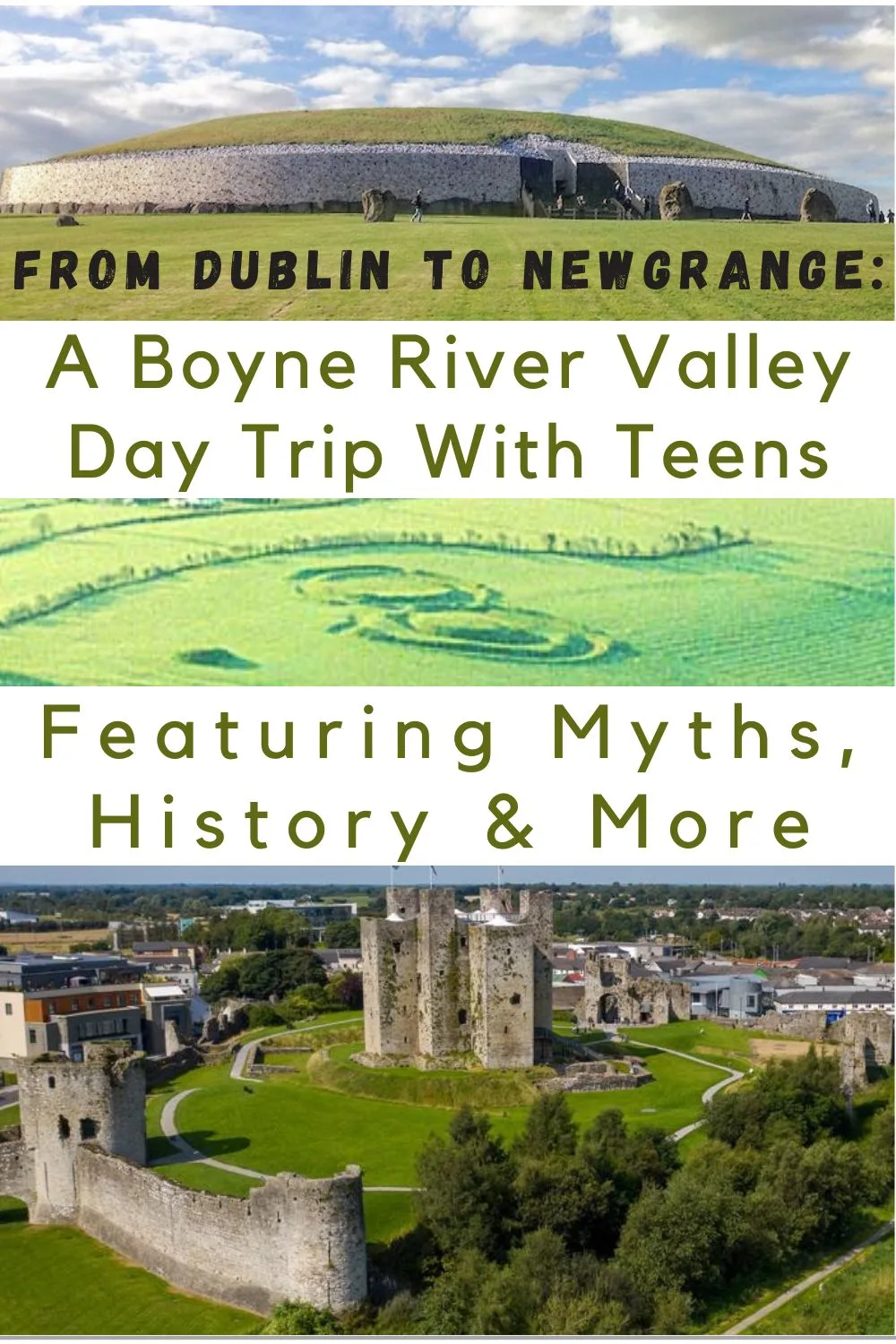
Photos: Newgrange (Newgrange.com and Heritage Ireland); Tara (Disover the Boyne Valley); Boyne Battle (Battle of the Boyne Visitors Center) Slane (catherinecronin/Creative Commons); Trim Castle (Meath County Council); Drogheda (Drogheda Tourist Council); Gormanston Trees (City North Hotel).

